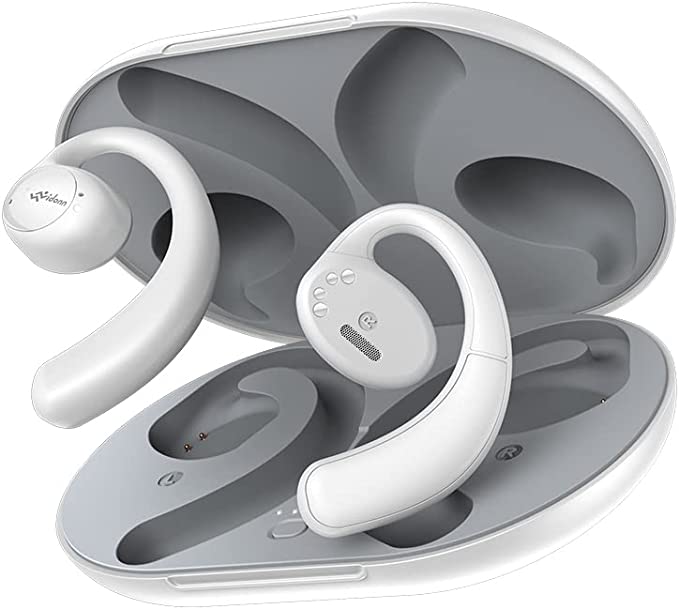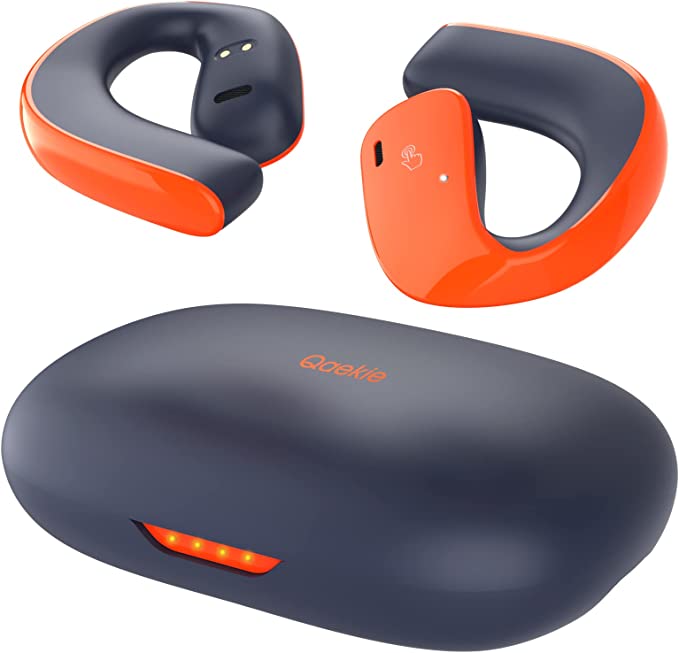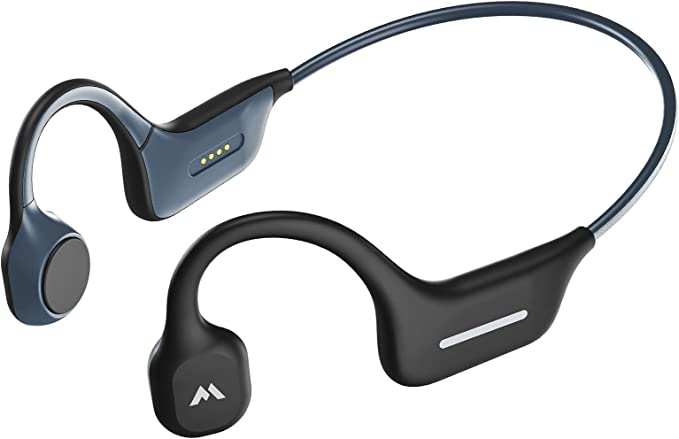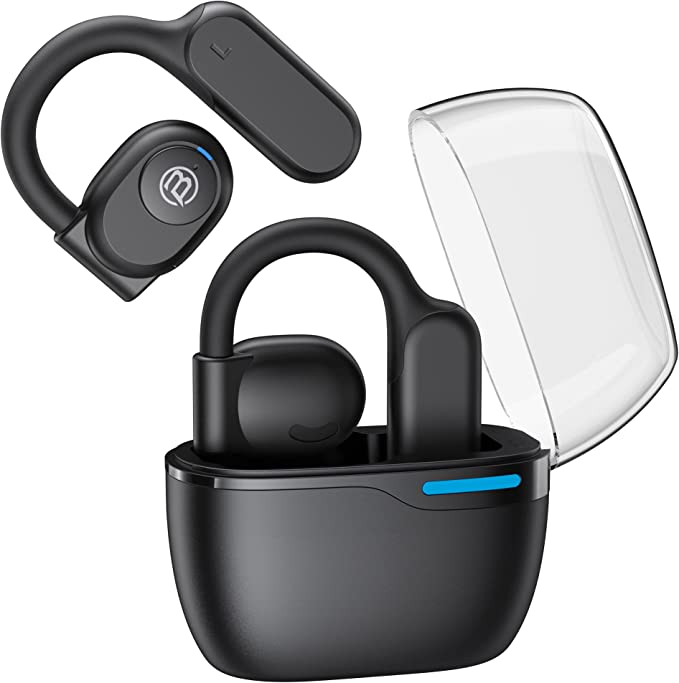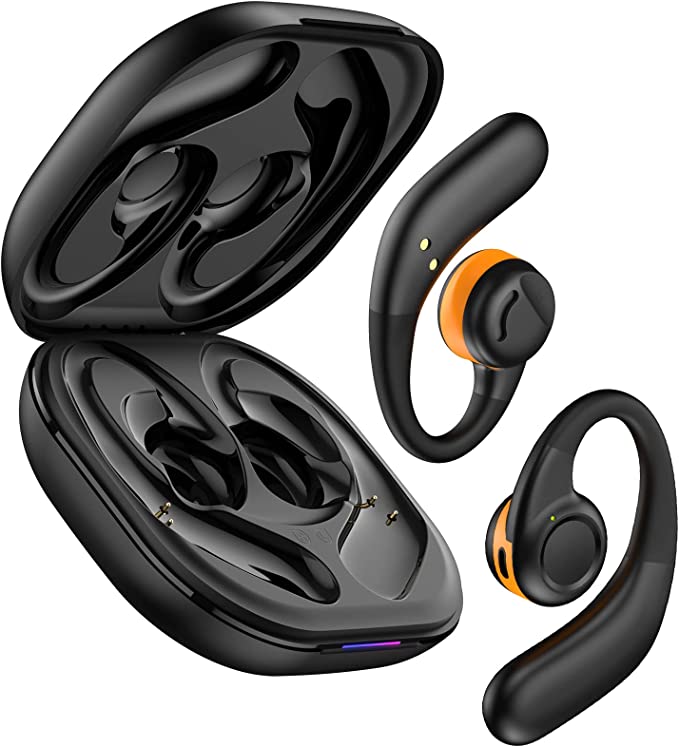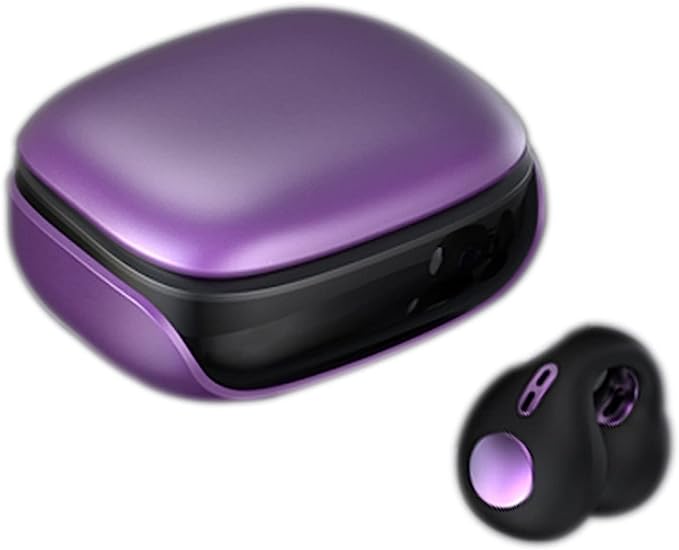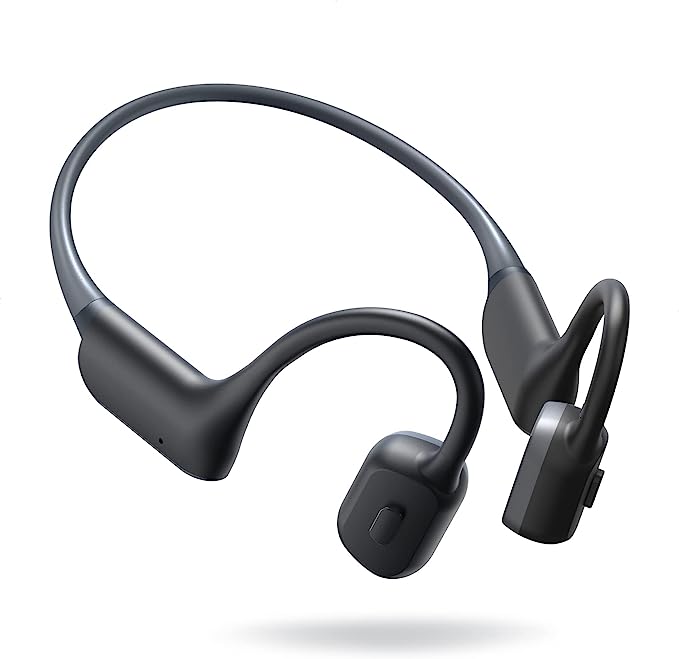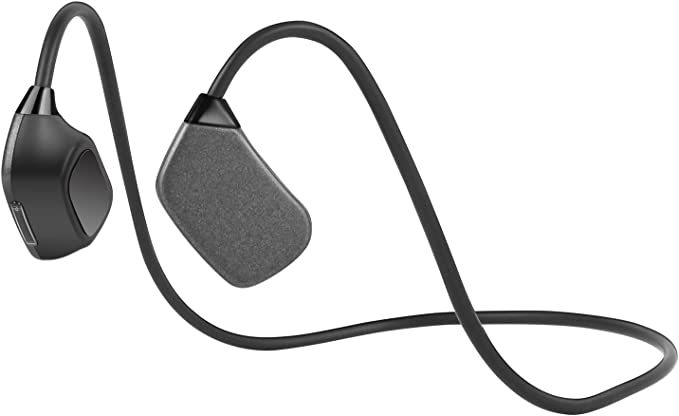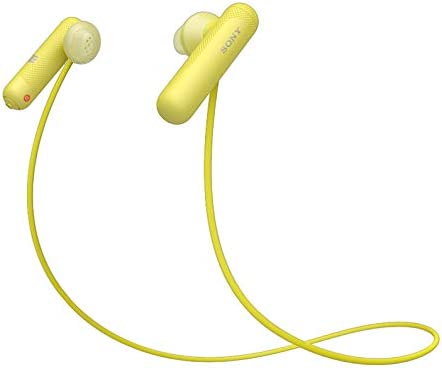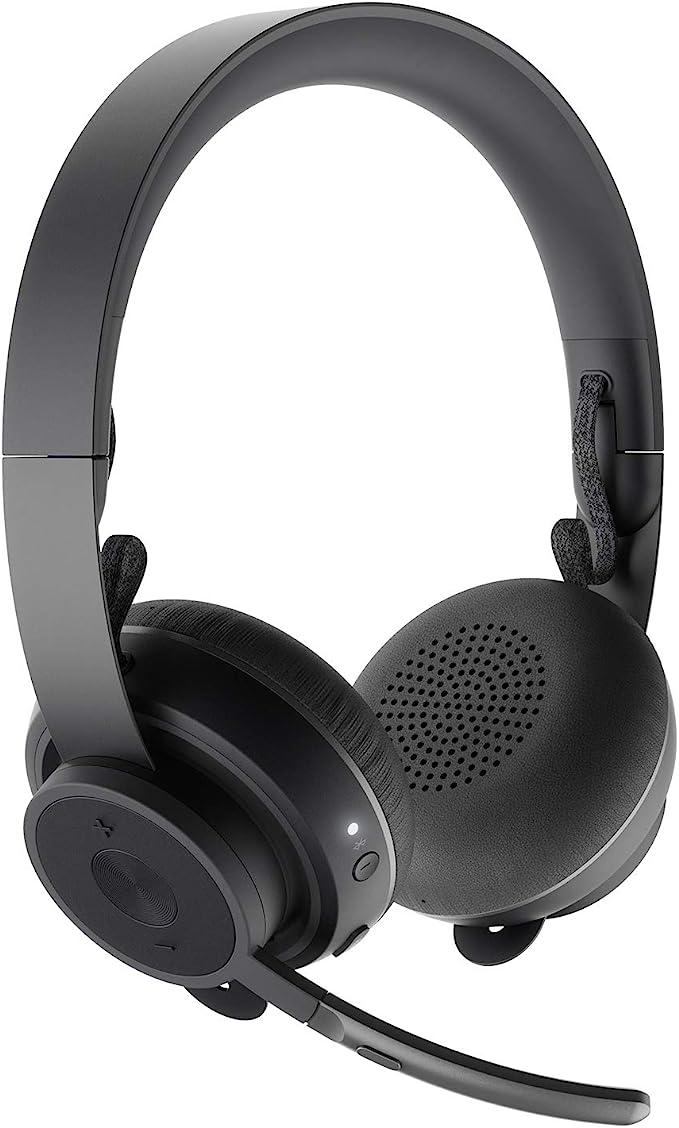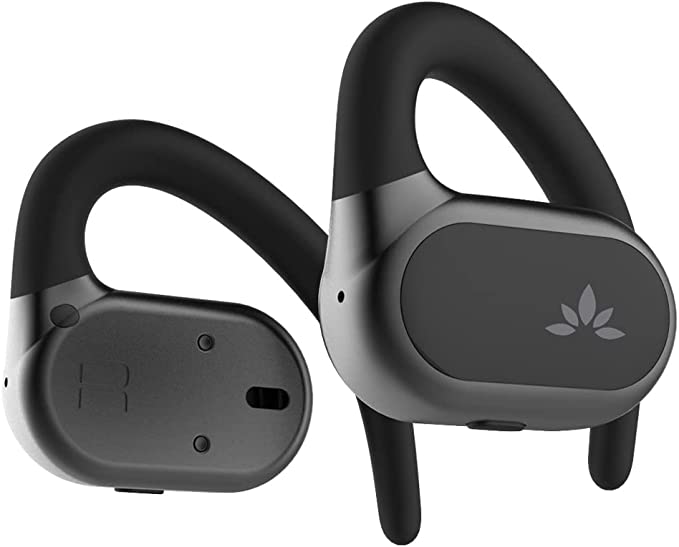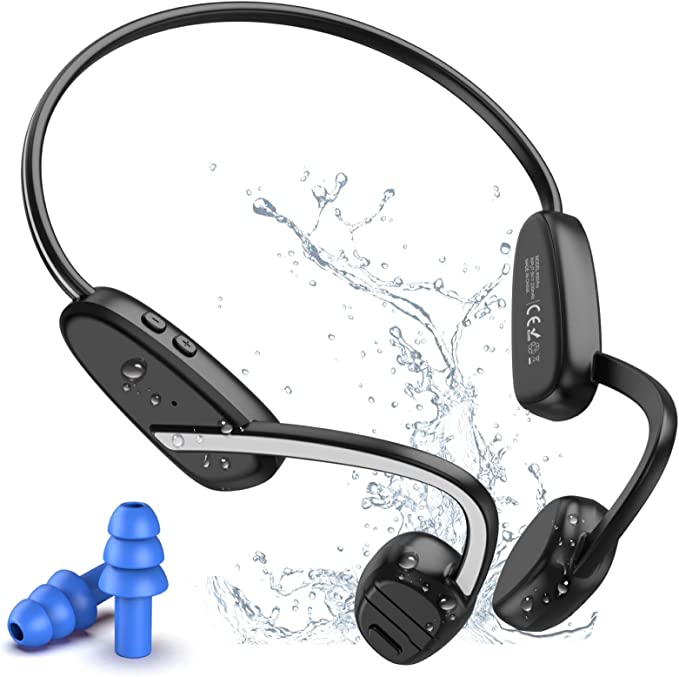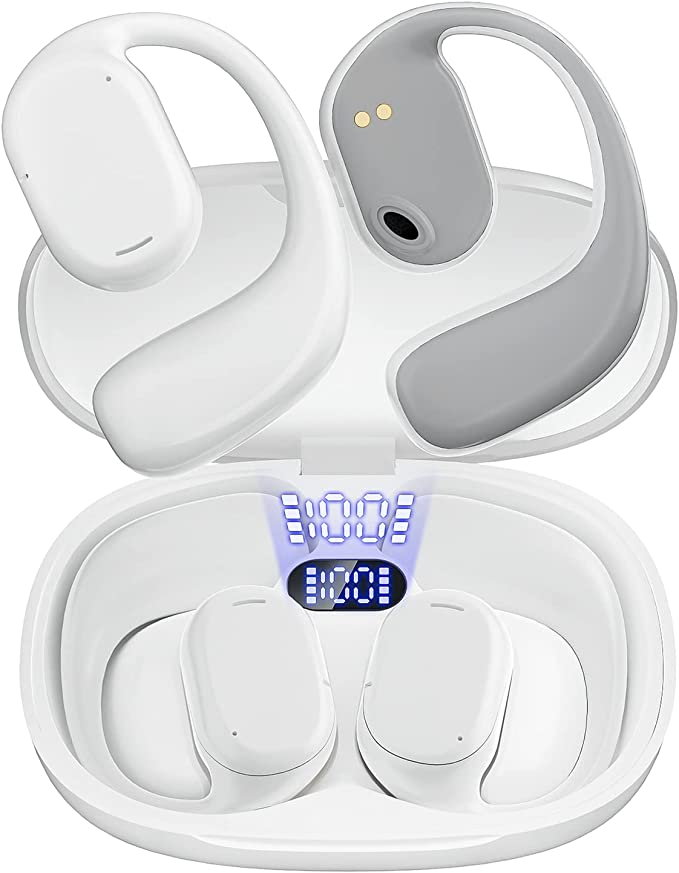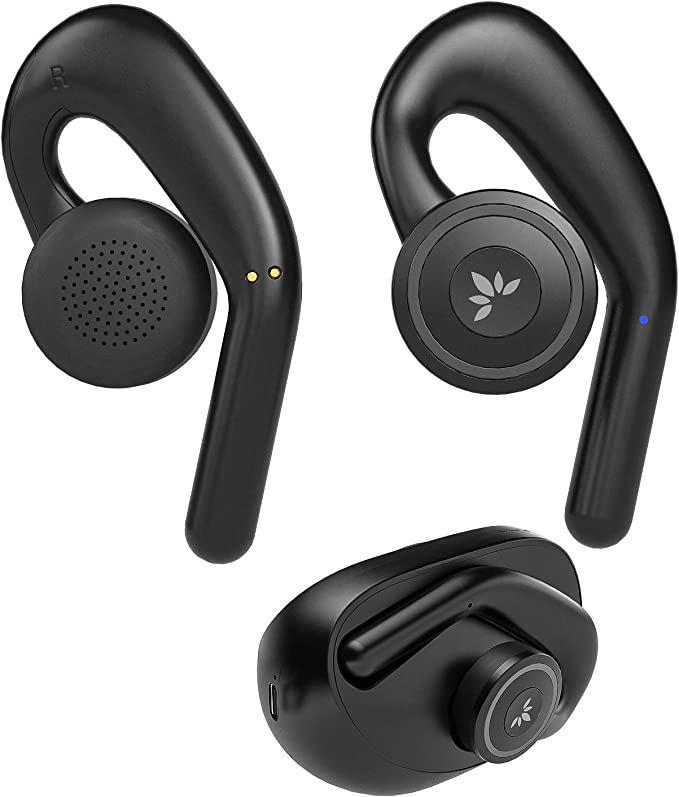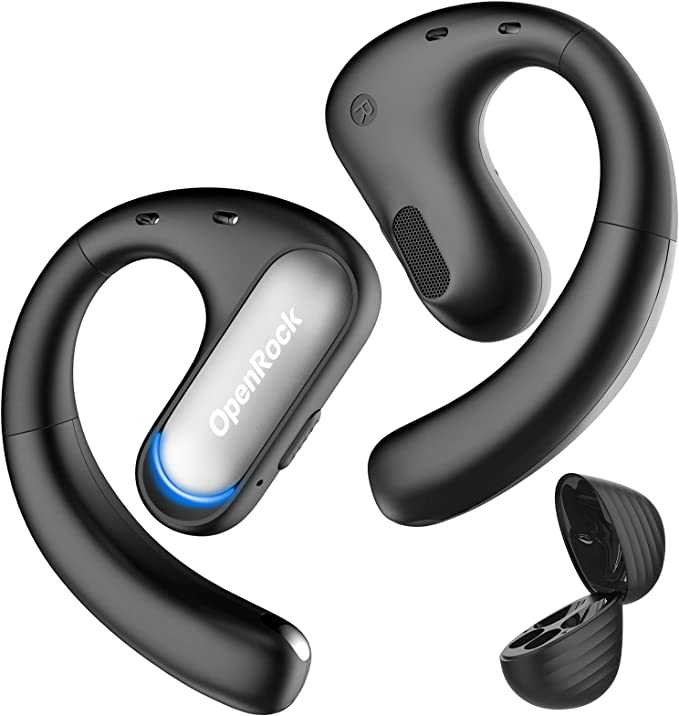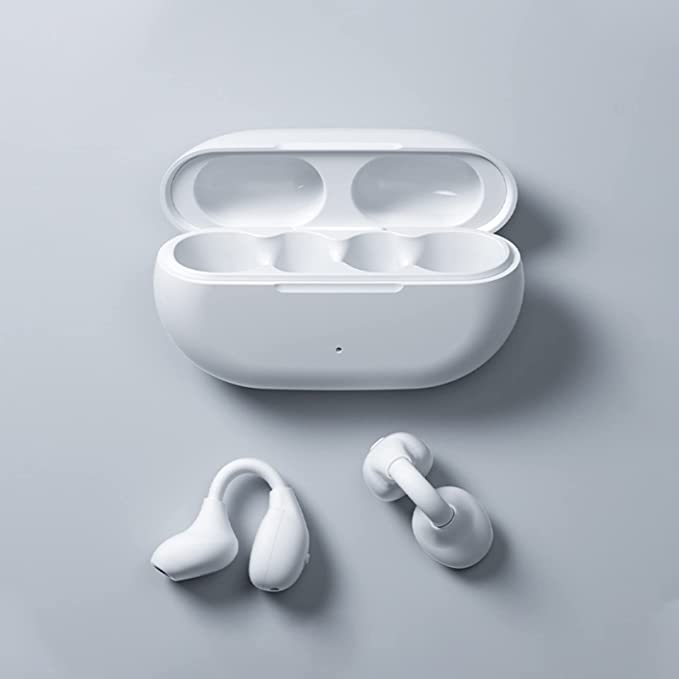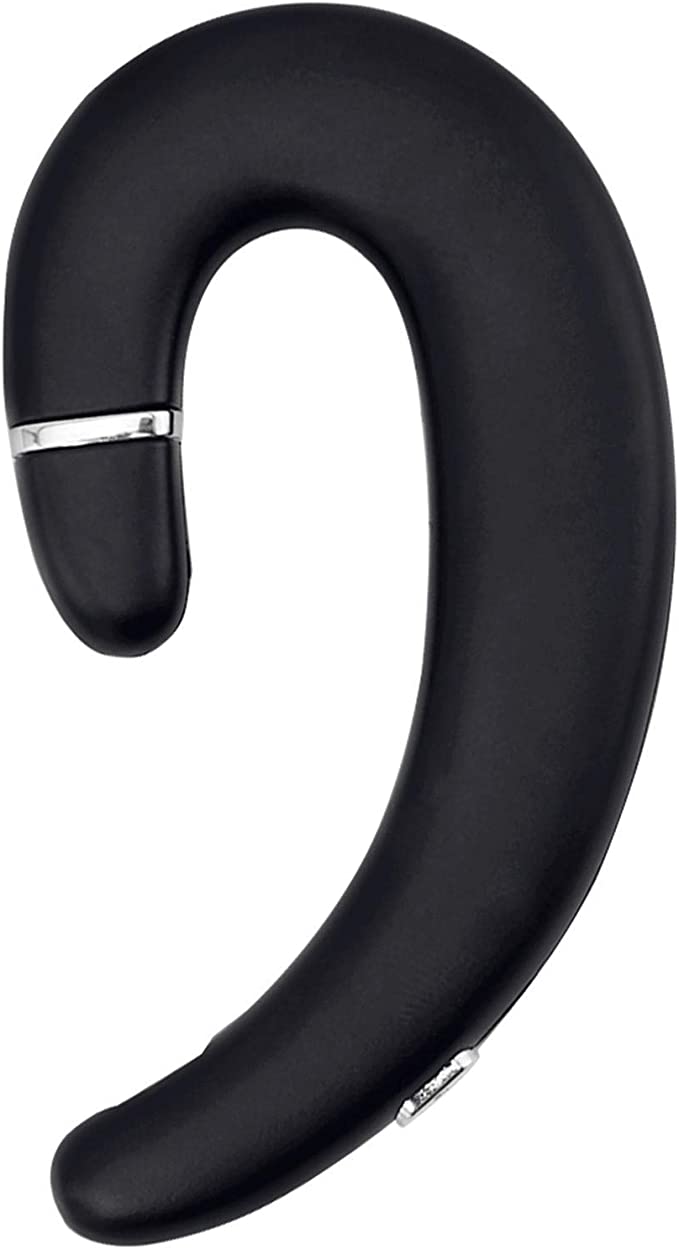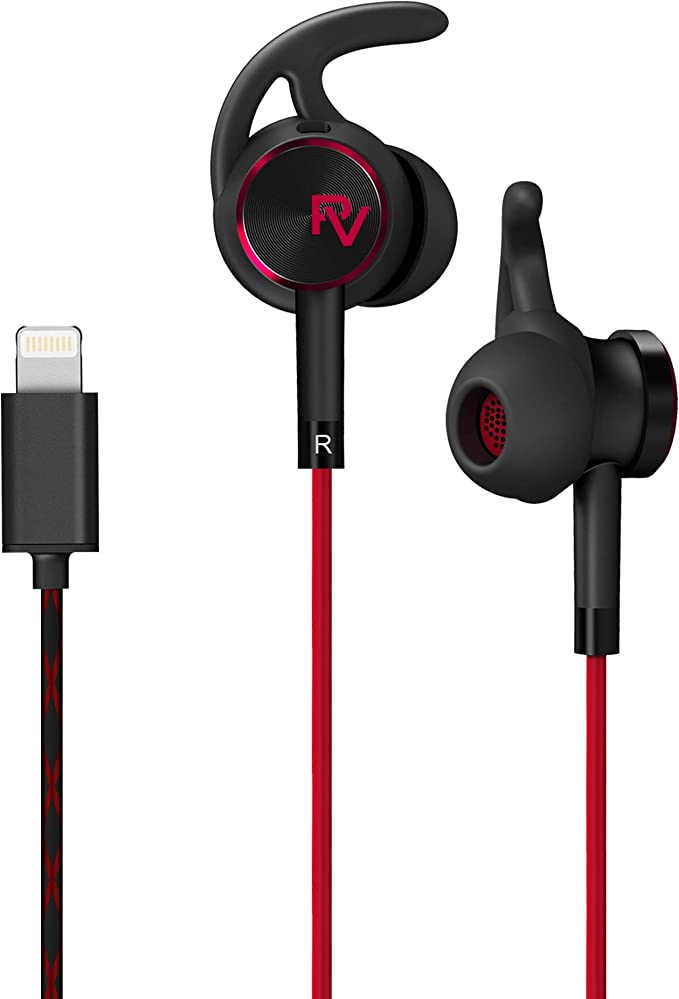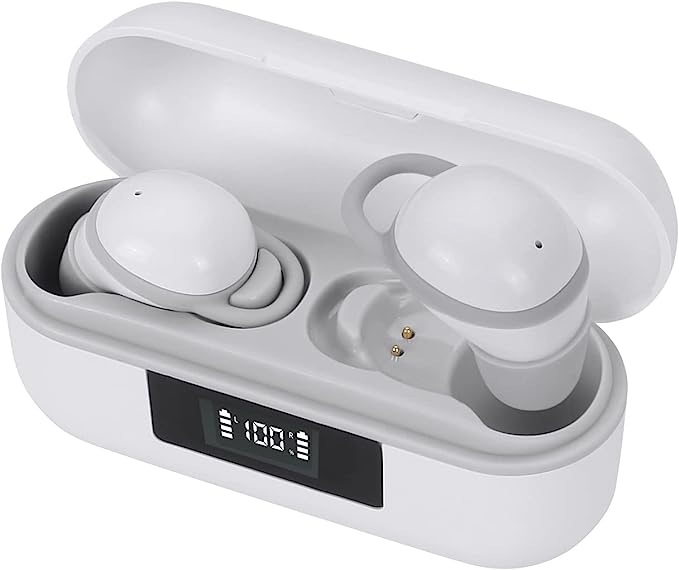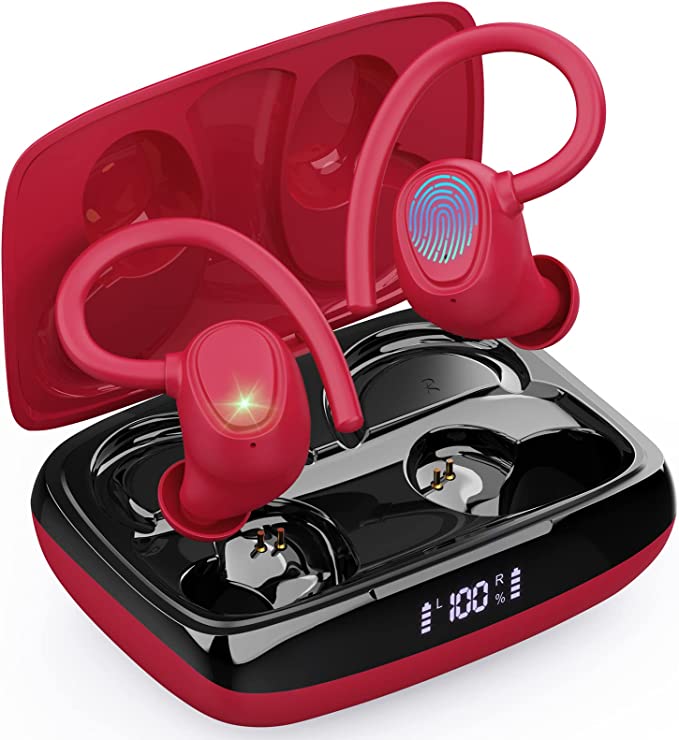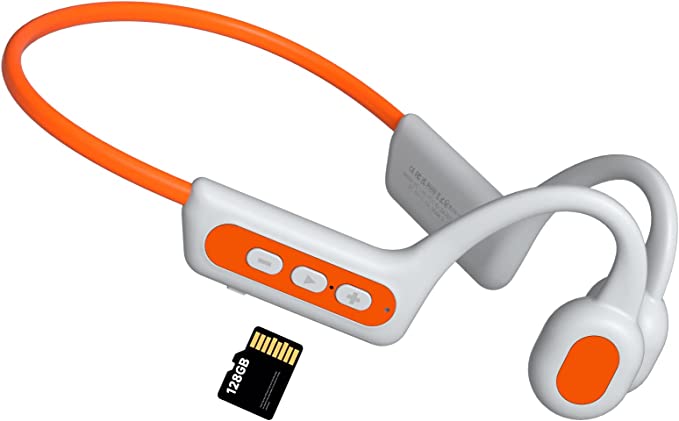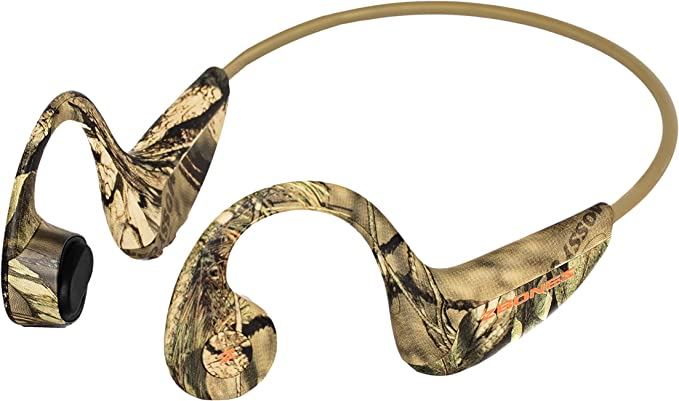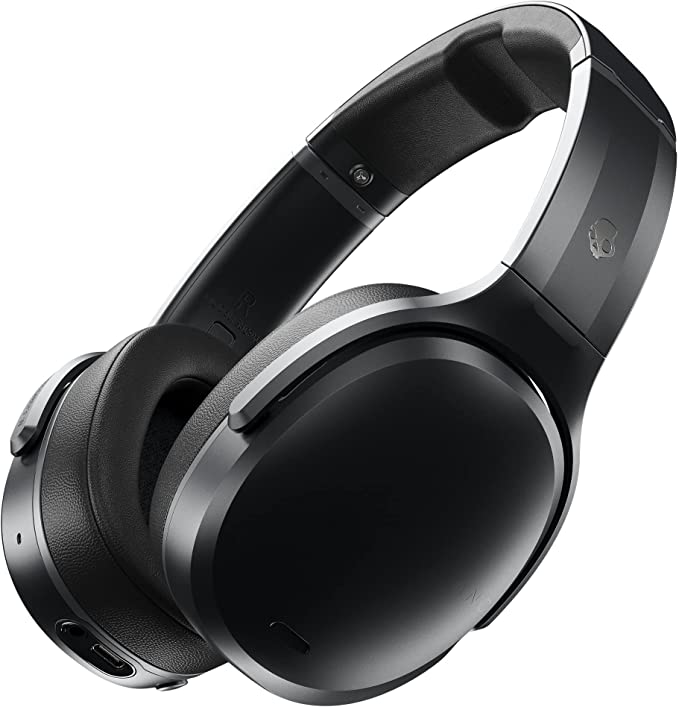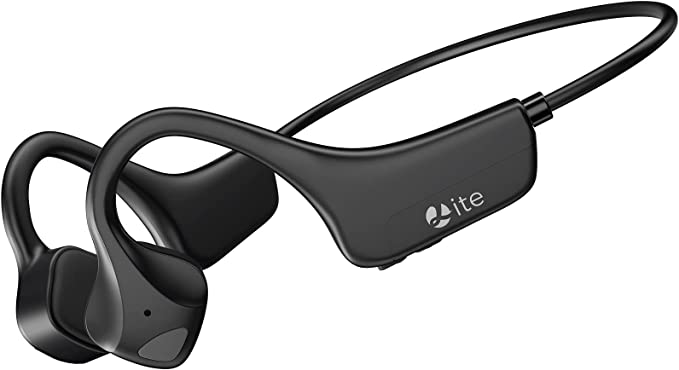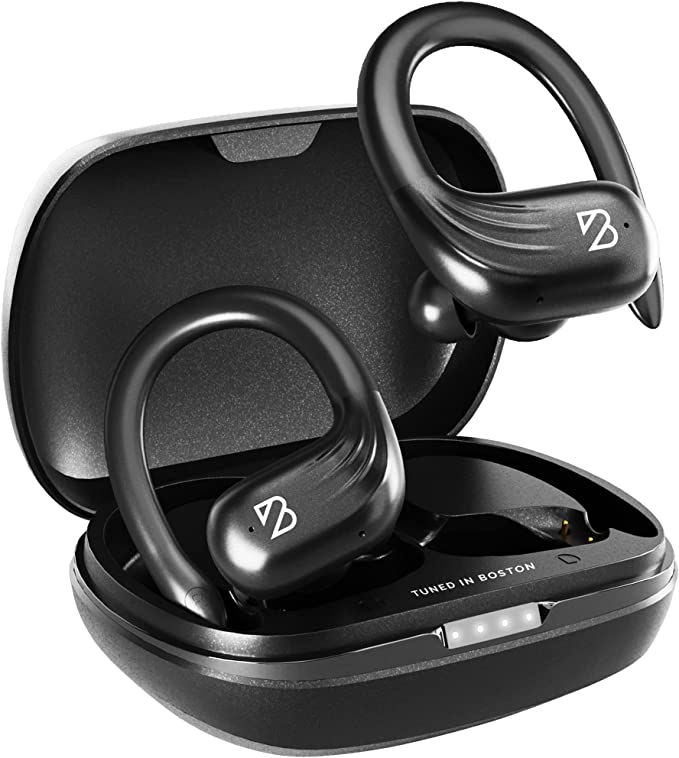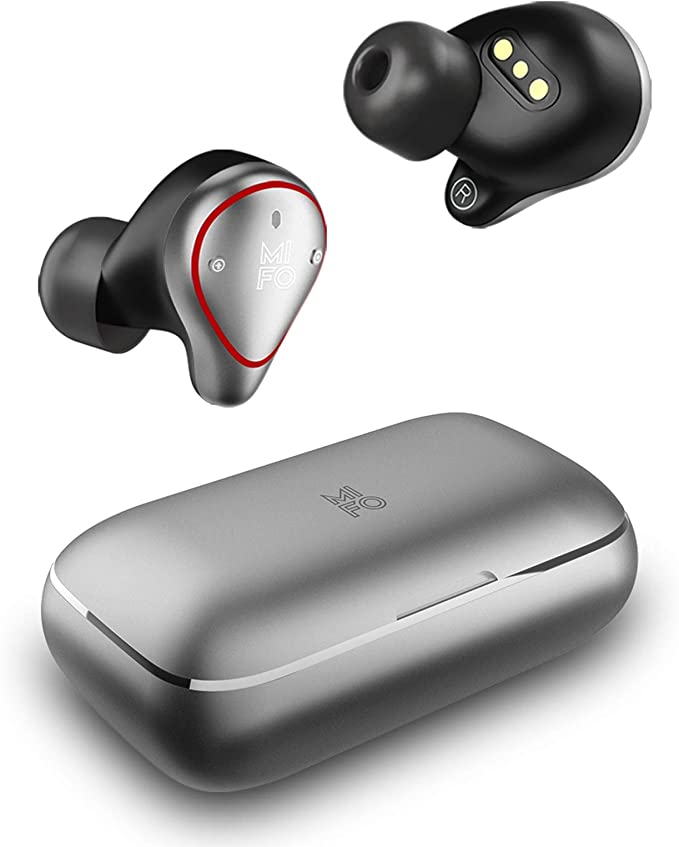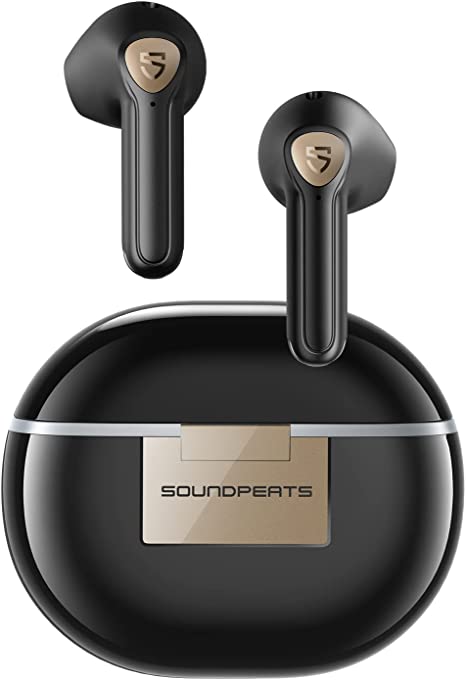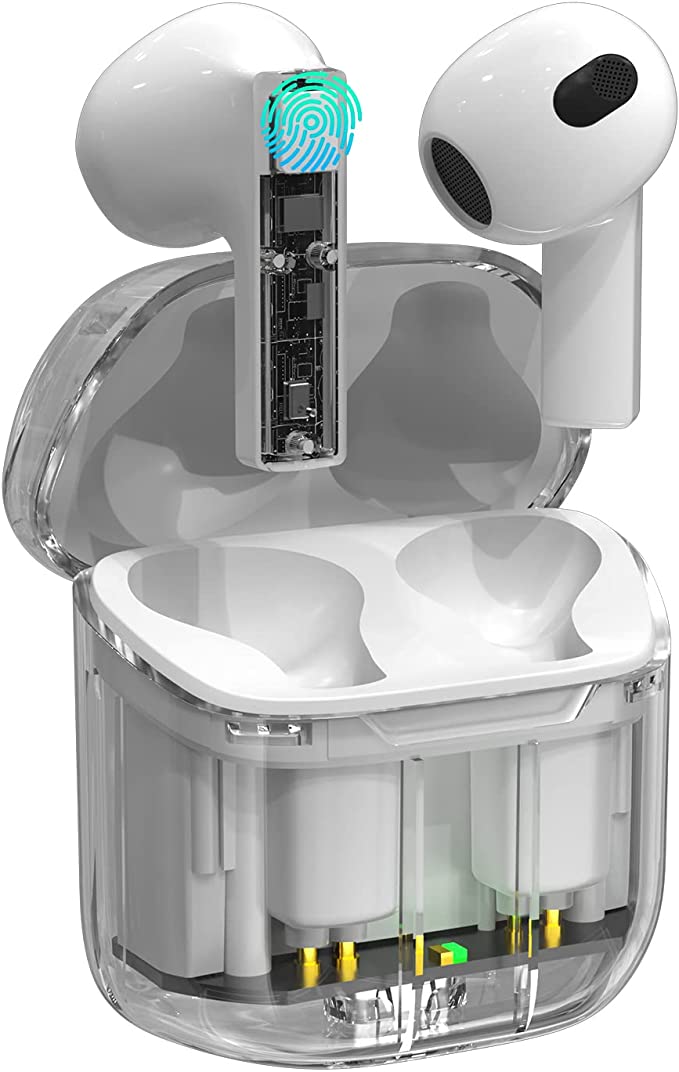Pinetree OPENEAR Solo Bone Conduction Headphones - The Open Ear Headphones for Outdoor Sports
Update on May 30, 2025, 2:47 p.m.
In the symphony of modern life, our ears are often caught in a crossfire. We crave the immersive escape of our favorite podcasts and playlists, yet the world around us – a bustling street, an office buzzing with colleagues, the quiet rustle of leaves on a scenic run – demands our attention. For decades, personal audio often meant a trade-off: dive deep into your sound, and you seal yourself off; stay aware, and you might sacrifice the richness of your audio. But what if there was a way to have a meaningful measure of both? This is the promise of open-ear listening, a philosophy that’s reshaping how we interact with sound, and the ZYZYZK AS1 (also known as OPENEAR Solo) headphones step onto this stage, offering their take on this auditory balancing act. The question that often surfaces with such devices, particularly when terms like “bone conduction” appear, is: how exactly do they work, and what can they truly offer?

Decoding Sound’s Journey: How We Hear, and How Headphones Play Along
Before we delve into the specifics of any single device, it’s fascinating to revisit the marvel of hearing itself, and the different technological paths headphones take to serenade our brains.
The most familiar route is air conduction. Think of it as a meticulously orchestrated relay race. Sound waves, which are essentially vibrations traveling through the air, are first gathered by the intricate folds of your outer ear (the pinna). They then journey down the ear canal to meet the eardrum, a thin membrane that vibrates in response. These vibrations are passed along by three tiny, exquisitely linked bones in the middle ear – the malleus, incus, and stapes (often called the hammer, anvil, and stirrup) – which amplify the vibrations and transmit them to the cochlea in the inner ear. Inside the fluid-filled, snail-shaped cochlea, specialized hair cells convert these mechanical vibrations into electrical signals. These signals then zip along the auditory nerve to the brain, which interprets them as the music, voices, and myriad sounds that color our world. Most traditional headphones, from bulky over-ears to tiny earbuds, deliver sound by generating these airborne vibrations right at the entrance of, or inside, your ear canal.
Then there’s a more unconventional path: true bone conduction. Imagine feeling the deep thrum of a bass drum at a concert not just with your ears, but through the floor, resonating in your chest. Bone conduction works on a similar principle of transmitted vibrations, but it takes a more direct route to the inner ear. Instead of relying on air to carry sound to the eardrum, bone conduction transducers (the parts that vibrate) are placed against certain bones of the skull, typically the cheekbones (zygomatic bones) or the mastoid bones behind the ears. These transducers generate subtle vibrations that travel directly through the solid bone to the cochlea, bypassing the eardrum and middle ear entirely. Legend has it that Ludwig van Beethoven, as his hearing declined, would bite onto a conducting baton pressed against his piano to “hear” the vibrations of his compositions. This is a classic, albeit rudimentary, example of experiencing sound through bone conduction. This technology has found valuable applications in hearing aids for certain types of conductive hearing loss and in specialized communication headsets where keeping the ear canal open is crucial, for instance, for military or emergency service personnel who need to hear radio communications alongside ambient sounds.
Now, let’s turn to the ZYZYZK AS1. The product is boldly titled “Bone Conduction Headphones” and its description highlights that it “delivers premium audio through the cheekbones.” This language strongly suggests an intention to leverage the principles of bone conduction. However, a curious detail emerges within the same product information: one section states, “Open-ear headphones use air conduction to produce sound,” and another image is captioned “Air Conduction Technology Open-Ear Headphones.” This apparent contradiction is echoed by a discerning user, Ben Bong, in a review dated August 12, 2023, who, while finding them comfortable and sounding good, commented: “…but are open ear headphones, not true bone conduction headphones.”
So, what’s the likely reality for the ZYZYZK AS1? Given this mixed messaging, it’s probable that the AS1 operates primarily as an open-ear air conduction device, with a design that strategically places small speakers very close to, or resting on, the cheekbone area in front of the ear. These speakers would direct sound waves towards the ear canal’s entrance, but without creating a seal. This allows external, ambient sounds to naturally reach the eardrum as well. The placement near the cheekbones might also introduce a degree of perceptible vibration through the bones, contributing to the overall sensory experience and perhaps leading to the “bone conduction” marketing terminology. However, the explicit mention of “Air Conduction Technology” from the manufacturer itself suggests this is the predominant method.
Ultimately, for the user, the precise label might be less important than the achieved effect: an open-ear listening experience that allows for significant situational awareness. The AS1 aims to let you hear your chosen audio while remaining aurally connected to your surroundings, and that’s the core value proposition we’ll explore.

The ZYZYZK AS1 Deconstructed: A Feature-by-Feature Exploration
Let’s peel back the layers of the ZYZYZK AS1, examining its key features not just as specifications, but as enablers of a particular listening experience, grounded in understandable science and real-world utility.
Embracing Openness: Design That Breathes Life (and Sound) In
The most defining characteristic of the AS1 is its open-ear physical design. This isn’t just an aesthetic choice; it’s fundamental to its function and appeal. By leaving your ear canals completely unobstructed, these headphones inherently promote safety. Imagine cycling through city traffic; the ability to hear an approaching car horn, a pedestrian’s call, or another cyclist’s bell is not just convenient, it’s a critical safety feature. The same applies to runners on shared paths or even individuals walking down a busy sidewalk.
Beyond safety, this openness translates to comfort, especially during extended wear. Traditional earbuds can cause pressure points or a feeling of stuffiness inside the ear canal, leading to what’s often termed “listener fatigue.” Over-ear headphones, while comfortable for some, can feel warm or heavy over time. The AS1, weighing in at a mere 27 grams, aims to be barely noticeable. This featherlight characteristic is achieved through materials like a flexible titanium alloy for the headband, known for its high strength-to-weight ratio and resilience. The product description also mentions a soft silicone coating, likely on areas that contact the skin, enhancing comfort and providing a secure, non-slip fit. This design also offers a hygiene benefit: with nothing inserted into the ear, there’s less buildup of earwax on the device and better air circulation for the ear canal.
For someone working from home, this could mean wearing headphones for hours during virtual meetings without discomfort. For an athlete, it means focusing on their performance without being constantly reminded they’re wearing a headset. It’s about making the technology feel less like an intrusion and more like a seamless extension of their senses.

The Unseen Handshake: Bluetooth 5.2 and the Quest for Stable Harmony
Connecting these headphones to your audio source is the job of Bluetooth 5.2. While version numbers can seem like just another piece of tech jargon, each iteration of Bluetooth brings tangible improvements. Bluetooth 5.2, a relatively recent standard, builds upon its predecessors by offering a more robust and efficient wireless handshake.
What does this mean for you, the listener? Firstly, improved connection stability. You’re less likely to experience those annoying dropouts or stutters in your audio, even in environments crowded with other wireless signals (like a busy gym or office). The provided specifications state a connection range of 10-15 meters (approximately 33-49 feet), giving you a good degree of freedom to move away from your paired device.
Secondly, enhanced power efficiency. Bluetooth 5.2 incorporates features from Bluetooth Low Energy (LE) Audio, although the AS1’s specific implementation details aren’t provided. Generally, more efficient Bluetooth means your headphones (and your phone or audio player) use less battery power to maintain the connection. This directly contributes to longer playback times.
Finally, broad compatibility. Bluetooth is a near-universal standard, and version 5.2 ensures the AS1 can readily pair with a vast array of devices, including iOS and Android smartphones, tablets, laptops, and smart TVs that support Bluetooth audio output. The product information confirms this wide compatibility and even mentions support for the Siri voice assistant, allowing for hands-free control if you’re an Apple user (similar Google Assistant functionality would typically be supported on Android). It’s about a frustration-free experience, from the initial pairing, which users like one from the draft article reported as “a breeze,” to maintaining that “rock solid” connection throughout your listening session.

The Marathon Runner: Battery Life and the Convenience of a Quick Sip (Type-C Charging)
A wireless device is only as good as its battery, and the ZYZYZK AS1 aims to be a dependable companion throughout your day. It houses a 230mAh Lithium Polymer (Li-Po) battery. Li-Po batteries are favored in many portable electronics due to their relatively high energy density, light weight, and ability to be formed into various shapes, making them ideal for compact wearable devices.
The crucial figure for users is playback time, and the AS1 claims a respectable 8-10 hours on a single charge, with a standby time of up to 30 days. This means you could potentially get through an entire workday, a long commute, or several workout sessions before needing to recharge. As Robert Castello noted in his review, they “stay charged really well too.”
When it is time to power up, the AS1 features a Type-C charging port. This is a significant convenience. Unlike older micro-USB connectors, Type-C is reversible, so you don’t have to fumble to plug it in correctly. It has also become the standard for most modern smartphones and many other gadgets, meaning you might already have a plethora of Type-C cables and chargers, reducing the number of different cables you need to carry. The product highlights a fast charging capability, stating that a full charge can be achieved in approximately 1.5 hours (the specifications section mentions “≈2 hours,” but “1.5 hours fast charging” is prominent). This quick turnaround minimizes downtime, ensuring your headphones are ready when you are. It’s the difference between an overnight charge and a quick top-up during a lunch break that gets you through the rest of the afternoon.
Dancing in the Rain (Lightly!): The IPX4 Weather Warrior
Life, especially an active one, isn’t always lived in perfectly dry, controlled environments. Whether you’re an avid runner who doesn’t let a little drizzle stop them, or someone who sweats profusely during intense workouts, your headphones need to be able to keep up. The ZYZYZK AS1 comes with an IPX4 water resistance rating.
Let’s decode that “IP” rating. “IP” stands for Ingress Protection, and it’s a standard defined by the International Electrotechnical Commission (IEC 60529). The first digit (which would be ‘X’ here, meaning it hasn’t been specifically rated for dust protection, or the manufacturer chose not to test/specify it) refers to protection against solid particles. The second digit, ‘4’ in this case, refers to protection against liquids. An IPX4 rating specifically means the device is protected against splashing water from any direction.
In practical terms, this makes the AS1 sweatproof and resistant to light rain. You can confidently wear them during a vigorous gym session, a run on a misty morning, or if you get caught in an unexpected light shower. However, it’s crucial to understand the limits: IPX4 does not mean the headphones are waterproof enough to be submerged in water. So, no swimming with them, and avoid exposing them to strong jets of water. But for the typical moisture encountered during exercise or light outdoor activities, IPX4 provides a valuable layer of durability and peace of mind, making them a more versatile audio companion. It also means they can be wiped down easily after a sweaty workout.

“Can You Hear Me Now?” – The Microphone’s Balancing Act
In an era of constant connectivity, headphones are often more than just music players; they’re communication tools. The ZYZYZK AS1 includes a built-in microphone, allowing you to take calls or interact with your device’s voice assistant without reaching for your phone. The specifications sheet notes an “Anti-interference -42dB” microphone.
The -42dB figure typically refers to the microphone’s sensitivity – a measure of how well it converts sound pressure into an electrical signal. A more negative number (e.g., -38dB) usually indicates higher sensitivity than a less negative one (e.g., -45dB), though this can vary with testing standards. The “anti-interference” aspect suggests some form of noise reduction or isolation is intended, aiming to make your voice clearer to the person on the other end of the call by minimizing the pickup of ambient sounds. As Gary Noack mentioned in his review, they “work well for phone calls!”
However, it’s important to set realistic expectations for call quality with open-ear headphones. Because your ears are not sealed, the microphone can potentially pick up more of your surrounding environment compared to, say, earbuds with a tight seal that might position a boom microphone closer to your mouth. While the AS1 aims to provide clear communication, performance in very noisy environments will likely be more challenging than in quieter settings. Nevertheless, for quick calls on the go or interacting with Siri (as explicitly supported), the integrated microphone is a definite convenience.
The Sound of Open Spaces: Audio Signature and What to Expect
The audio experience with open-ear headphones, like the ZYZYZK AS1, is inherently different from that of traditional in-ear or over-ear models that create a seal. This design choice directly influences the sound signature, particularly in the lower frequencies.
One of the most common pieces of feedback for many open-ear and bone conduction headphones is a perceived lack of deep, thumping bass. User Robert Castello noted the AS1 “lack a bit of bass,” and Ben Bong also mentioned “Bass response is lacking.” This isn’t necessarily a flaw in the headphones themselves, but rather an acoustic characteristic of the open design. Deep bass frequencies often rely on a sealed air volume within the ear canal (with earbuds) or the earcup (with over-ear headphones) to resonate and be perceived powerfully. When the ear canal is open to the environment, much of this low-frequency energy can dissipate rather than being channeled directly to the eardrum.
However, this doesn’t mean the sound quality is poor. Many users, including those quoted, still describe the overall sound as “good.” For mid-range frequencies, where human voices and many musical instruments primarily reside, and for higher frequencies that contribute to clarity and detail, open-ear designs can perform quite well. This makes them particularly well-suited for listening to podcasts, audiobooks, taking calls, or enjoying music genres where an overwhelming bass presence isn’t the main draw. The sound often feels more “airy” or “spacious,” as if the music is playing around you rather than directly inside your head. It’s a different kind of immersion, one that blends your personal audio with the acoustic tapestry of your environment. The key is to adjust your expectations: if you’re a bass-head seeking earth-shaking lows, these might not be your primary choice. But if you value clarity for voice and a more natural, aware listening experience, the AS1’s audio profile could be a good fit.

Beyond the Specs: The AS1 in the Tapestry of Daily Life
So, who is the ZYZYZK AS1 truly for? It carves out a niche for individuals who prioritize situational awareness, long-term comfort, and a balanced audio experience over absolute sound isolation or a bass-heavy audiophile presentation.
Consider the urban commuter navigating busy streets, needing to hear traffic and announcements while still enjoying their morning podcast. Or the office worker who wants to listen to focus-enhancing music but needs to remain approachable and aware of colleagues. Think of the avid runner or cyclist for whom hearing their surroundings is a non-negotiable safety requirement. Parents keeping an ear out for their children while doing chores, or individuals who simply find in-ear devices uncomfortable for extended periods, could also find value here.
The consistent feedback regarding their lightweight nature (“you barely know you have them”) and the ability to hear surroundings underscores their utility in these scenarios. While the debate over “true bone conduction” versus “open-ear air conduction” is valid from a technical standpoint, the end-user benefit remains largely the same: you are not cut off from the world. Coupled with a reasonable price point, as alluded to by customers who “like the value,” the AS1 positions itself as a pragmatic tool for a specific kind of listening.
The Future is Open: Listening Transformed?
The ZYZYZK AS1 and similar open-ear headphones represent more than just another way to listen to music; they hint at a broader shift in our relationship with personal technology. There’s a growing desire for devices that integrate more seamlessly and less intrusively into our lives, augmenting our senses rather than replacing or blocking them. Open-ear audio aligns with this, allowing for a digital audio layer to coexist with the natural soundscape.
As technology evolves, we might see further refinements in sound delivery for open-ear designs, perhaps achieving richer audio fidelity without compromising awareness, or incorporating more sophisticated directional sound to minimize leakage. The journey is towards making technology feel more organic, more attuned to our human need to be both engaged with our content and connected to our environment.
In this evolving landscape, the ZYZYZK AS1 offers a practical and accessible entry point into the world of open-ear listening. It may not be the ultimate solution for every audio need, but for those who value that delicate balance between their personal soundscape and the world humming around them, it presents a compelling case. It invites us to consider not just what we listen to, but how we listen, and how that choice shapes our daily experience.


